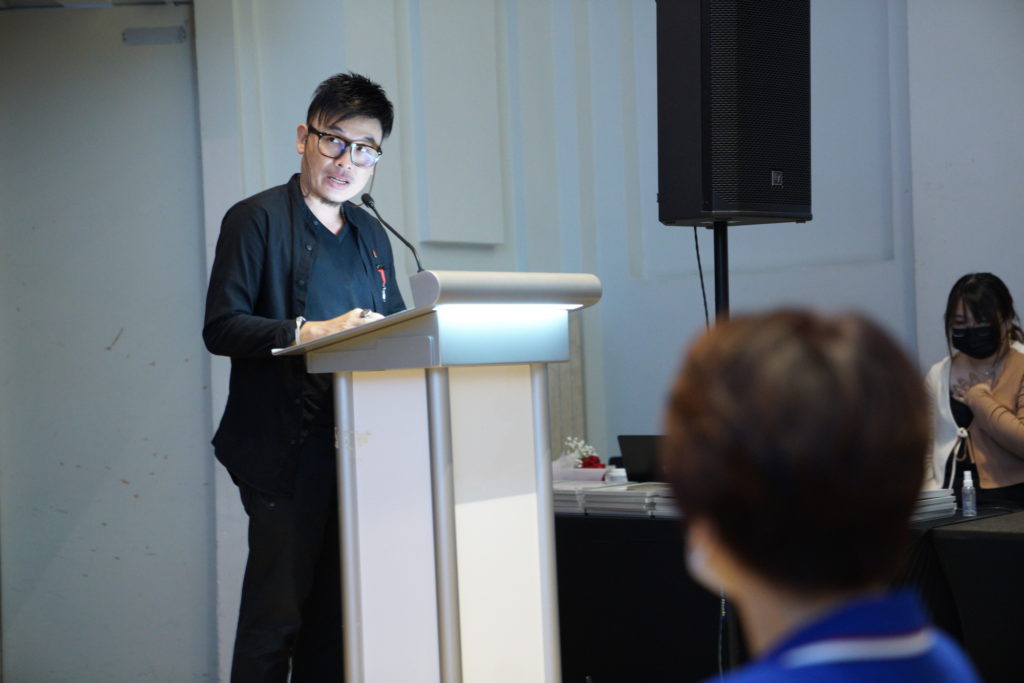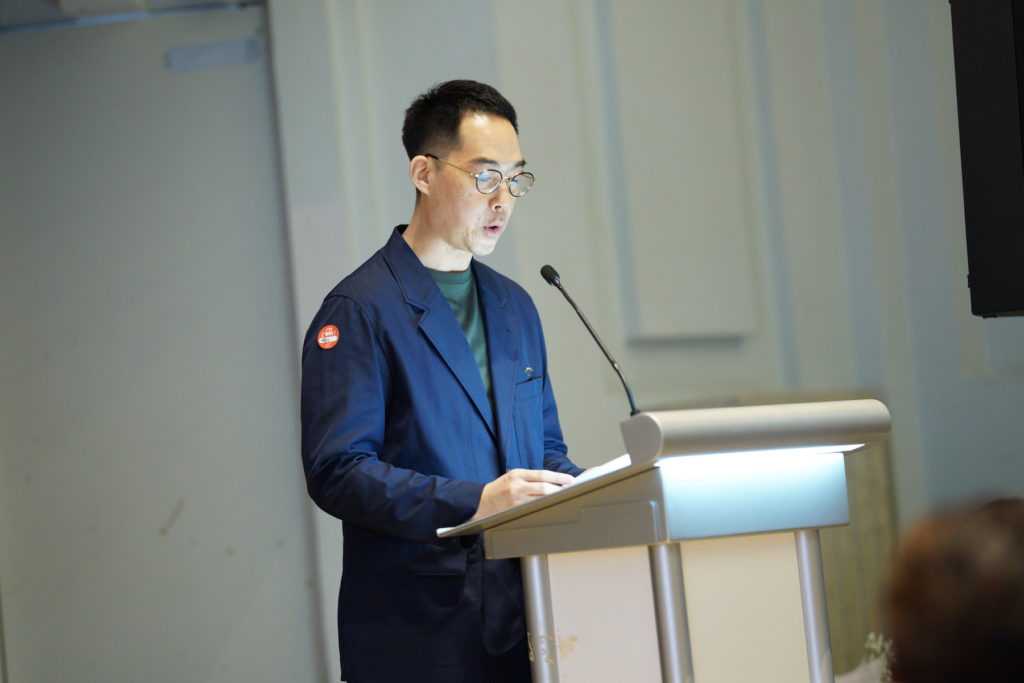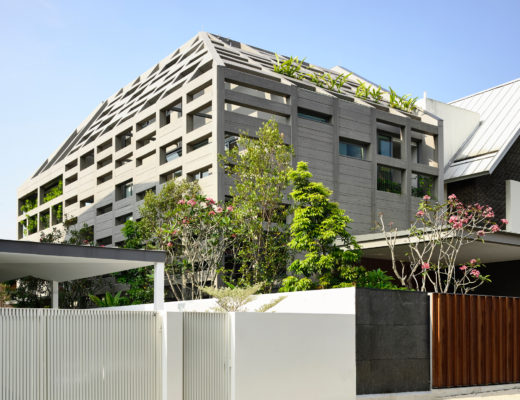The programme, initiated by the Society of Interior Designers, Singapore, aims to raise industry standards and create pathways for continuing education
A framework to better regulate Singapore’s interior design industry and provide opportunities for practitioners to regularly upskill has been launched by the Society of Interior Designers, Singapore (SIDS).
Above photo: Ms Low Yen Ling, Minister-of-State for Trade & Industry and Culture, Community & Youth accompanied by council members of SIDAC at the Inauguration of Singapore Interior Design Accreditation Council & Official Launch of Singapore Interior Design Accreditation Scheme.
The Singapore Interior Design Accreditation Scheme (SIDAS) was unveiled by Minister of State for Trade and Industry, Ms Low Yen Ling, at a press conference at the National Design Centre.
Envisioned to be a game changer for Singapore’s interior design ecosystem, it aims to benefit not only interior designers, but also design practitioners who want to be properly trained in the craft.
The move is expected to benefit consumers, who will now have greater clarity when engaging the services of interior designers. In 2020, there were a total of 745 complaints lodged with consumer watchdog CASE against design firms and renovation contractors.

The SIDAS is also aimed at setting the local industry on a pathway of professionalism and continued excellence, where practitioners are regularly striving to improve to make a bigger impact in both the local and international markets.
“We see the accreditation as a catalyst for the rejuvenation and reorganisation of Singapore’s interior design ecosystem,” said SIDS president and chairman of the Singapore Interior Design Accreditation Council (SIDAC), Professor Keat Ong.
“Our industry was plagued by those who gave the profession a bad name, the untrained or under-trained who masqueraded as interior designers but only to put in sub-par work or worse, incomplete work. SIDAS aims to eradicate such issues by classifying interior designers based on their qualifications and experience so consumers are clear who they are working with.
“But equally important is to nurture a culture of lifelong learning and upskilling. Singapore designers are getting recognised for significant projects overseas and we want to continue the trend of exposing our best talents internationally.”
“Our industry was plagued by those who gave the profession a bad name, the untrained or under-trained who masqueraded as interior designers but only to put in sub-par work or worse, incomplete work. SIDAS aims to eradicate such issues by classifying interior designers based on their qualifications and experience so consumers are clear who they are working with.”
Professor Keat Ong
NEW CLASSIFICATION
The scheme will see interior designers classified into three categories: Interior Design Practitioner Class 1, 2 and 3. Criteria for assessment will be based on an interior designer’s relevant academic qualifications (ie. a degree, diploma or Nitec in interior design / interior architecture) and work experience. The baseline competency for interior designers will be framed against the SkillsFuture Skills Framework for Design. All candidates for the three categories will also be required to complete a Professional Practice Course to complement their work experience. Applicants for the Interior Design Practitioner Class 1 (ID1) will also be required to undertake an exam.
The three interior design classifications that will be introduced are:
- Interior Design Practitioner Class 1 (ID1) – Degree in Interior Design/Interior Architecture and 24 months of work experience
- Interior Design Practitioner Class 2 (ID2) – Work-Study Diploma/Diploma/Specialist Diploma in Interior Design/Interior Architecture and 18 months of work experience
- Interior Design Practitioner Class 3 (ID3) – NITEC in Spatial Design and 12 months of work experience
Under Phase 1 of the scheme, established practising interior designers, such as those with a minimum of eight years of experience, can apply for accreditation from November 2021 to May 2022. Phase 1 will be assessment based, where work experience in-lieu of academic qualifications can be considered.
After which, Phase 2 will see the accreditation open to recent interior design graduates (June 2022 to May 2023). Students about to graduate can apply under Phase3 (June 2023 onwards).
An accreditation committee will review all applicants before granting accreditation and the committee will be appointed by SIDAC, which will consist of members from Government agencies, industry practitioners, as well as academics from institutes of higher learning.

PROMOTING LIFELONG LEARNING
A key success factor of SIDAS is the regular upskilling of the industry. To achieve this, the Singapore Interior Design Academy will be set up to provide pathways for practitioners, whether fresh graduates or design veterans but without the right qualifications, to get certified.
SIDAC deputy chairman, Mr Fann Zhi Jie, added: “SIDAS was designed to be an inclusive programme, to allow as many of those in the design industry to be able to upskill and develop the necessary competencies and skill sets to eventually progress across the categories. But even when one reaches the ID1 category, the learning journey doesn’t stop.”
“Through the Continuing Professional Development programme, accredited interior designers are encouraged to deepen their skills in their own tracks or gain knowledge in other areas in the spirit of growth and development. For example, someone well-versed in design may want to gain insights into technology.”
The academy will also be working with institutes of higher learning to promote more lifelong learning opportunities.
Mr Vinc Loh, an interior design practitioner for over 20 years, is someone who is looking forward to the accreditation scheme. He started out without academic qualifications but in 2021, worked his way to a CET Diploma in Design (Interior Design) from Singapore Polytechnic.
He shares: “Instead of relying on self-proclamations, SIDAS will provide me with an opportunity to prove myself with recognised accreditations. In the past, we’ve relied on the blind trust of being able to prove we were credible interior designers. With SIDAS, industry professionals such as myself will be able to provide increased assurance to our clients. The scheme will also provide us (interior designers) with a platform to continue to provide higher standards of work quality that will also push us to take on global projects in the future.”
You might also like:




